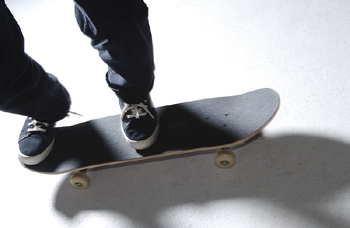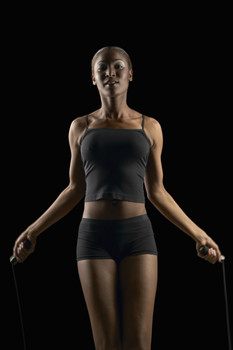Sports Guides
How to Become a Boxer
How to Become a Boxer
Maybe your biggest dream has always been to fight like your favorite professional boxer or perhaps you want another outlet for your competitive nature. Either way, becoming a boxer is thrilling, exciting and will test your limits beyond anything you have ever experienced before. Tie on those boxing gloves and get ready to work out every muscle in your body. Most of all, as you prepare to follow the workouts of the greats like Ali and Evander Holyfield, follow these steps to become a boxer in your own rite and have a great time challenging yourself in the process.
1. Think like a boxer. The first and most important step in becoming a boxer is thinking like one. Ali didn’t spend his afternoons on the couch and neither will you if you’re serious about the sport. Scout out your local boxing ring and spend whatever time you can there each day or week. Many times you can get connected with a coach who sees you boxing, and other times you can find one through other resources in your area. It’s important to find someone you can trust and will help you achieve your goals as a professional/amateur competitive fighter and encourage you along the way.
2. Participate in boxing events. Every boxing club or gym will give you access to boxing events, otherwise known as “smokers” or “white collar nights”. Although training typically takes six to nine months before your first fight, you can get in-the-know and prepare for one through these resources, by talking to other amateur boxers and learning about events from your coach.
3. Get licensed. Get familiar with USA Boxing. This is the governing body of amateur boxing in the United States and will determine when and how you can fight. You’ll want to make sure to get licensed (which is a prerequisite before participating in any amateur fight) which isn’t difficult but just takes filling out some paperwork and paying the filing fees.
4. Know your division. Depending on your age, this will determine what division you are fighting in. A regular amateur is for ages 18-34, Junior qualifies people ages 17 and under and the Master division is for ages 35 and up. It’s also important to know the weight requirements for your division so be sure to thoroughly read the qualifications before getting set to compete.
5. Win your first tournament. As you win that first local tournament, you will begin to move up the ranks and that’s when the fun really begins. You will begin to compete against other winners in your competition level, which will then continue on to the U.S. Amateur Championships.
If you’re just starting out, it may seem like you have quite a few “to-do” things on your list to tackle before you’ll be ready for your first fight. Although it can be tedious, you’ll find that fighting is an addictive sport and well worth the time and effort it took to get there.
Author Bio: Heather J. writes on behalf of BoxFitUK.com, your source for Rival Boxing gear!
How to Skateboard
Knowing how to skateboard can be the difference between having a blast on your board and breaking your bones. A basic understanding of how to skateboard is essential before you ever step on a board.
Skateboarding How To
The following skateboarding how to tips aimed at skateboarding beginners.
Gear Up
The first step in learning how to skateboard is getting together the proper gear. Start out by buying a proper pair of skateboarding shoes. You can skate in your everyday shoes, but it will be more difficult and even dangerous. Skateboarding shoes are built with a wide flat bottom for gripping the board.
A helmet is another essential. A fall from a skateboard can seriously hurt or even kill you if you’re not wearing a helmet. Other essential safety gear — protective pads. Depending on the type of skateboarding you’re doing, you may only need elbow pads. Once you start skating on a ramp or other trick surface, you’ll need knee pads and wrist braces as well. Go ahead and buy them all just in case you need them.
Getting On a Skateboard

How to Skateboard
Before you try any tricks or long rides, you should be comfortable simply standing on your skateboard.
Standing on a skateboard is uncomfortable at first — you aren’t standing on solid ground anymore. For your first time, set the board in a patch of grass or even on the carpet in your living room if you have permission from your folks. Try simply standing on the board, jumping on top of it, standing on it with one foot, anything you think will help you get comfortable on the board. Learn to balance on the front or back wheels. Move your feet around in different positions, just to familiarize yourself with the size of your board. It may sound silly, but learning to stand on a skateboard is essential.
Pushing Off
Pushing the skateboard means getting it moving. Take your board out to the sidewalk or parking lot and get comfortable standing on the board.
When you’re ready, try cruising around the parking lot. With your front foot’s toes over the front truck, use your back foot to push so that the skateboard starts rolling. Once you’re rolling a little, put your back foot on back on the skateboard. If you start to slow down, push off some more with your back foot.
Turning
Part of pushing off is turning — when you want to turn, simply lean in the direction you want to go. This is a slow turn, but a safe one for the beginning skateboarder. Once you’re more comfortable on your board, you can learn to balance on your back wheels for just a second and push your front wheels in the direction you want to go. This kind of turning takes practice, but is more efficient and faster than the leaning turn.
Skateboarding can be a safe and healthy form of exercise, a mode of transportation, and even a cool lifestyle choice. Doing it safely is important, wearing safety gear, and taking baby steps in your learning process will keep you out of the ER as long as possible. Be safe out there.
How to Jump Rope like a Boxer
We’ve all seen the pre-fight clips and Hollywood movies depicting boxers jumping rope like a madman and, when we do, we’d all love to learn how to jump rope like a boxer, even if the thought is fleeting. Boxers and rope jumping have gone hand-in-hand from the early days of prize fighting, because rope jumping is great for your cardiovascular endurance and lung capacity, while increasing your hand and foot coordination.
Boxers jump rope in order to increase those things, built up leg muscles and burn off calories. Though you’ll have to build up to a long rope jumping session, if you are in reasonable good shape and have good coordination, you should be able to learn how to jump rope like a boxer in a short time.
Jumping rope is about timing and rhythm, agility and endurance. To jump rope and look good going it, you’ll have to build all of these traits in yourself. Let’s start with timing.
Jump Rope Body Position
Your feet need to be in alignment with your hips and you need to be standing straight up, with good posture, to begin jumping rope. When I mention “in alignment” with your hips, I mean that your right foot should be directly under your right hip, while your left foot should be directly under your left hip.
Next, hold both ends of the rope and start with the rope behind you.
Flick Your Wrists

How to Jump Rope like a Boxer
To begin the rope moving, flick your wrists and forearms forward, so the rope loops over your head. The rope is going to move in a revolution (orbit/circle) around your body, so when that revolution reaches your feet, jump. The rope should pass harmlessly under your feet.
Repeat Many Times
Repeat this step over and over, maintaining the same rope speed and jumping every time the rope reaches your feet. Pretty soon, you should be able to anticipate the rope, as you get into a rhythm with the rate of speed it takes your rope to make a revolution.
Practice this step over and over. Sometimes, you’ll get tired, as lactic acid builds up in your lower legs. Sometimes, you’ll lose concentration and you’ll get out of rhythm, making it more likely that you mess up. If you mess up, start over again, resting to catch your breath, according to your fitness.
Jumping Rope like a Boxer
Build up your stamina jumping rope, while your leg and arm muscles build up “muscle motor memory” of how to jump rope. This means it becomes second nature eventually, and you can add new levels of challenge by jumping rope longer and faster. In time, you might even learn how to cross over the rope, by switching the position of your hand, which is something boxers often do, when they want to impress people with their rope jumping skills.
Watch out if you’re overweight, because jumping too long or too often on a body with too much weight for your build can cause shin splints. This means you shouldn’t tax yourself too much in early jump-roping sessions. As you jump rope more often, you’ll build stamina and leg muscles, as well as foot speed, so you’ll be less likely to hurt yourself when jumping rope.
In no time, you’ll figure out how to jump rope like a boxer. When you do, you can put on demonstrations like your favorite prize fighter. Don’t imagine that, because you can jump rope like the middleweight champ, you can fight like them, though. That’s a whole other lesson.
